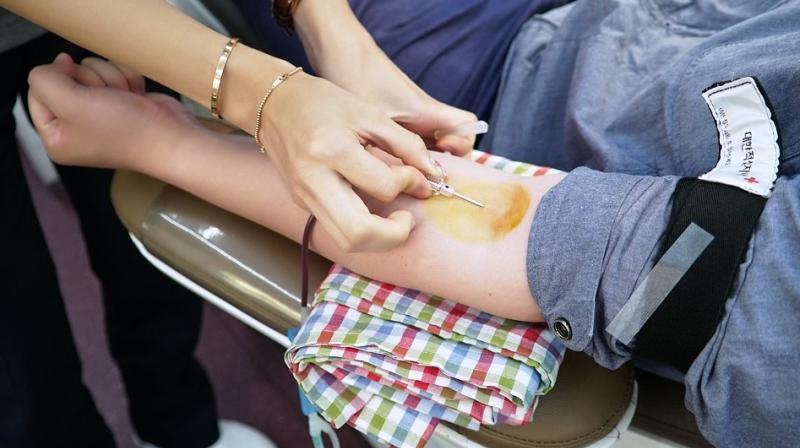Adolescent female blood donors now at risk

Washington: A new study now finds that female adolescent blood donors are more likely to have low iron stores and iron deficiency anaemia than adult female blood donors and nondonors, which could have significant negative consequences on their developing brains.
The study, led by authors from John Hopkins, proposes a variety of measures that could help this vulnerable population. Although blood donation is largely a safe procedure, adolescents are at a higher risk for acute, adverse donation-related problems, such as injuries from fainting during donation, explain study leaders Eshan Patel, and Aaron Tobian.
They further shared that blood donation may also increase the risk of iron deficiency, as each whole blood donation removes about 200-250 milligrams of iron from the blood donor. This is because adolescents typically have lower blood volumes, when donating the same amount of blood.
They have a relatively higher proportional loss of haemoglobin, and consequently more iron during donation than adults. Females are even more at risk of iron deficiency than males due to blood loss during menstruation every month.
Numerous studies have shown that younger age, female sex and increased frequency of blood donation are all associated with lower serum ferritin levels (a surrogate for total body iron levels) in blood donor populations.
However, note Patel and Tobian, no study using nationally representative data has compared the prevalence of iron deficiency and associated anaemia between blood donor and nondonor populations, specifically adolescents.
The researchers analysed data from the National Health and Nutrition Examination Survey, a long-running study designed to assess the health and nutritional status of adults and children in the U.S. based on both physical exams and interviews conducted by the Centers for Disease Control and Prevention.
From 1999 to 2010, this study included collections of blood samples as well as questions about blood donation history in the past 12 months. The researchers found 9,647 female participants 16-49 years old who had provided both samples and blood donor history information. There were 2,419 adolescents ages 16-19 in this group.
They report in the journal Transfusion on February 19 that about 10.7 per cent of the adolescents had donated blood within the past 12 months, compared with about 6.4 per cent of the adults.
Patel and Tobian note that some federal policies and regulations are already in place to protect donors in general from iron deficiency due to this altruistic act, such as haemoglobin screening, a minimum weight to donate and an eight-week interval between donations for repeat whole blood donation.
However, more protections are necessary for adolescent donorsfor example, suggesting oral iron supplementation, increasing the minimum time interval between donations or donating other blood products such as platelets or plasma rather than whole blood could help mitigate iron loss.

